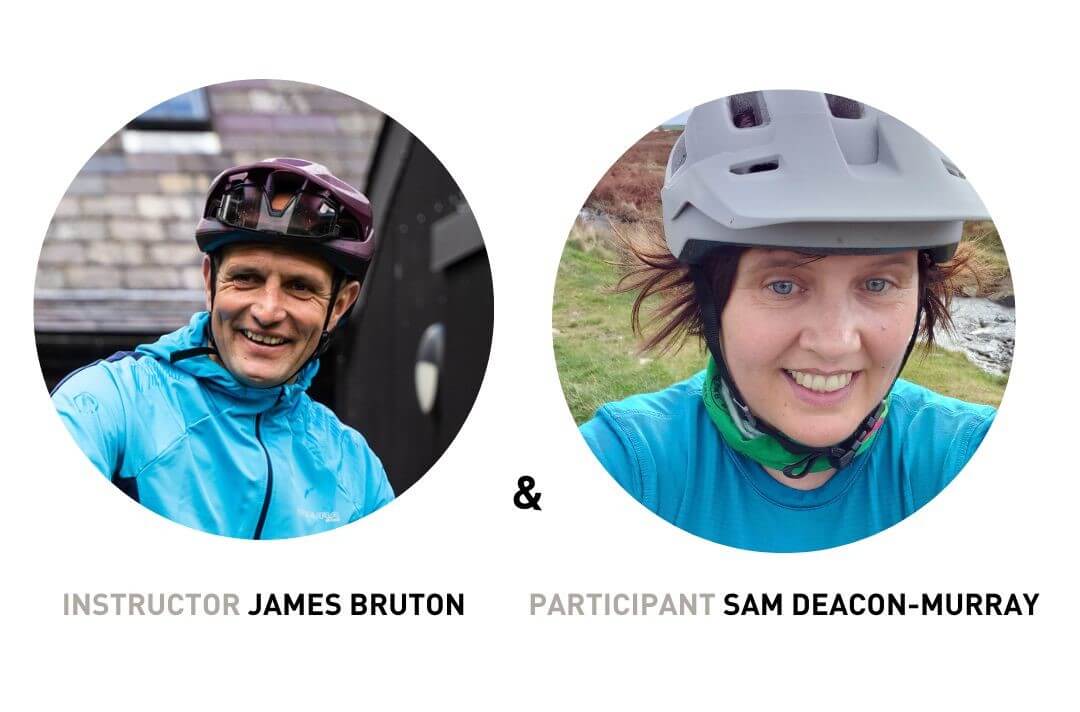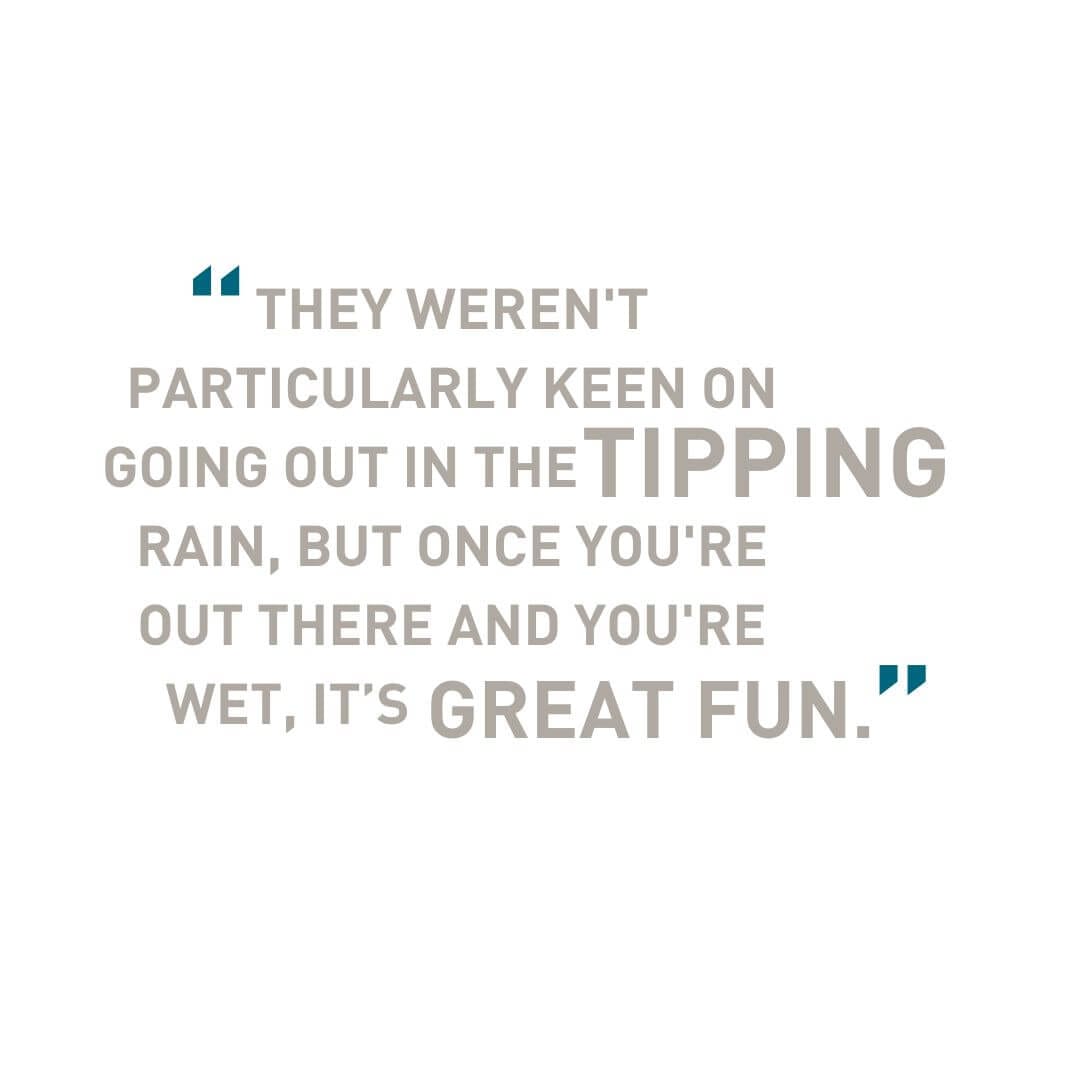
An Interview with James Bruton and Sam Deacon-Murray

Join us for a Q&A with instructor James Bruton and participant Sam Deacon-Murray.
Sam, what was your first impression when you arrived in the morning?
Sam: It was very wet outside and I was very impressed with the diversity of the group, actually. I thought it was quite inspiring because we had a couple of older riders with us. And that was great.
It started off cool because we did some cornering which I’m not great at so I was looking forward to doing that.
I remember when you were thinking about doing the course you thought ‘this might be scary’. Was there an intimidation factor, or did that dissipate?
Sam: I wasn’t sure about the course because I thought it was going to be a bit gnarly. But actually, the course description on the website said it’s not for gnarly downhillers, the armour wearing brigade, so it was suited for me. So no, it didn’t feel intimidating at all. It was great. It was really friendly bunch.

James, how did you decide on the venue or location?
James: Well, obviously when you wake up in the morning and the rain is beating on the Velux window above your bed, you have to find some motivation from somewhere. Being paid is one thing. He laughs. So yes, coming to a conclusion on where to go for a day, there’s lots of things that go into the pot. Obviously a big part of it is the weather; this weekend it was pretty terrible. The ability of the riders or clients is a big one; and then what terrain you’ve got available to you. On the first day of a course very often I won’t have a plan particularly, I’ll have some options. And actually, what was really nice was when the people turned up in the morning, they were at a higher standard than I thought they’d be so that opened up more options for us, which was really good. We stayed local on day one and a did bit in our skills area here. Then we got in the minibus, loaded up the trailer, and went to the local Gwydir trails where we selected some [trail] sections which sort of hit the targets of the client. The main focus of the first day was doing drop-offs on the bike and general trail riding skills. So yeah, that’s the sort of process you go through. Once I got over the ‘it’s really wet out there’ disappointment it’s also keeping their clients motivated; they weren’t particularly keen on going out in the tipping rain, but once you’re out there and you’re wet, it’s great fun.
Sam, did you go into the course with goals?
Sam: Yeah. For me, I just want to get a bit braver and get more confidence at doing some downhill trails and doing them correctly, really, just to be a more efficient rider. So cornering was one of them because I quite often brake in corners. I probably go into them too fast which is something I learned yesterday, and gaining more confidence with drop offs as well.
Any objectives for you as the instructor, James?
James: I guess the objectives always are to provide the students, the riders, with what they want but also what they need. Sometimes that’s not the same thing, and sometimes it is. So the objectives are to make it as safe as we can whilst hitting their targets. And obviously having loads of fun is key. We have lots of courses here at Plas y Brenin and that’s just to get roughly the right people on the right courses. But ultimately what we do is take people from where they are and make them better. So that’s the objective always really.
Yesterday was really rainy. How did the rain change the way you ride?
Sam: Oh, I love riding in the wet and so it was great. That’s living in North Wales though isn’t it? Yeah, it did change the way I rode. It made me a little bit apprehensive going down single-track steep stuff. I was a bit scared that it might be slippy on the rocks but actually they weren’t as bad as I thought they would be. After the first run, I definitely had a bit more confidence.

James?
James: Yeah, obviously makes the trails more slippery. And it brings another dynamic into the sort of risk management side of things. Part of doing any of these sports and especially mountain biking is learning to process the terrain as it’s coming towards you and use your quick thinking to make a decision. Along the way, we also stopped a fair bit, looked at features, and talked about how we’d ride them. We want to have fun, but also minimise the risk in the wet conditions really. And I definitely took one for the team a couple of times taking photos and getting soaked with water getting splashed out puddles!
Sam, what did you learn on the course?
Sam: To ride with a lot more space between your legs and your bike, it definitely gives you more manoeuvrability. And trusting the bike to move a bit more as well. That definitely helped my riding. And to look up a lot more, actually.
James, what would be your parting advice to the participants on this particular course?
James: Certainly for a couple of individuals, the advice was have more confidence in their ability because they were good riders, just struggling a bit with confidence. Hopefully some of the things we did on the course, breaking things down, having a better understanding of the fundamental skills of mountain biking, knowing that you can, you know, revisit individual points as you’re riding down the trail. The advice I give to people is to ride a trail that is well within your capabilities and then focus on one thing at a time to improve on. And also something that I think most of the group we had on the course said they didn’t do much of was what we call sessioning bits of the tracks. So pushing up and doing it again. That’s quite a good way of improving confidence; building skills. So we that was a key point as well.
Sam, what do you think that will stand to gain by taking a mountain bike course instead of just going out on their own?
Sam: Oh, okay. So I think there’s always something to learn. And I think we will get, I certainly get, into bad habits when I ride. And also just to get more confidence; like James said, redoing bits of the trail. It was really good for our confidence yesterday. Definitely rode it better.

James: People often spend a lot of money on bicycles; bicycles are very expensive these days. And they think they can ride them, and some can, but often they could definitely benefit from some coaching. People spend all the money on the bike and don’t put any money into learning to ride it. If they paid a bit of money to learn to ride the bike, got some coaching, they would be able to ride that very expensive bike loads better. And I do come across people that that think that falling off a bike is what you do every time you ride it and that in my mind definitely isn’t the case. If you get some coaching on the fundamental skills, then that’s a lot less likely to happen. You’ll have more fun, hurt yourself less, and it will cost you less money to fix your bike when you break it.
